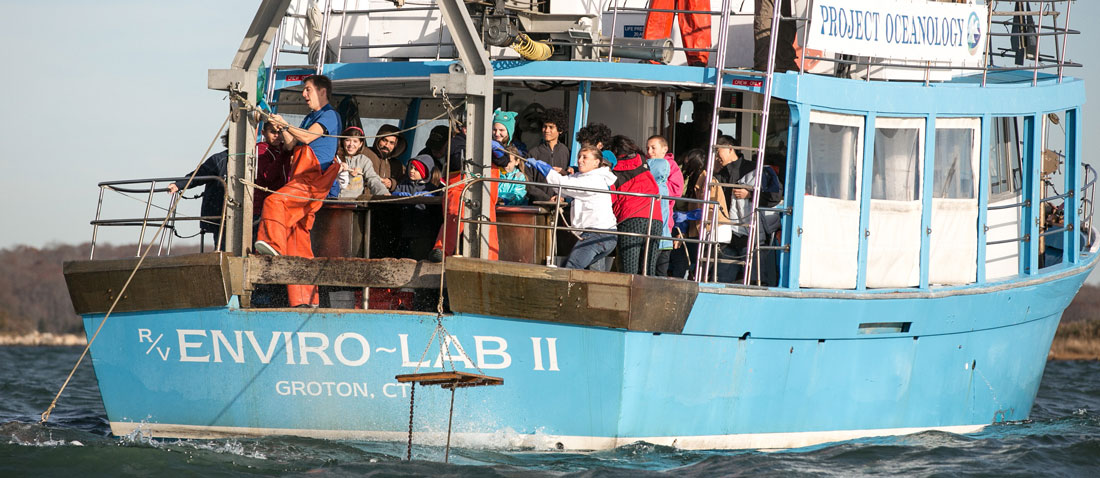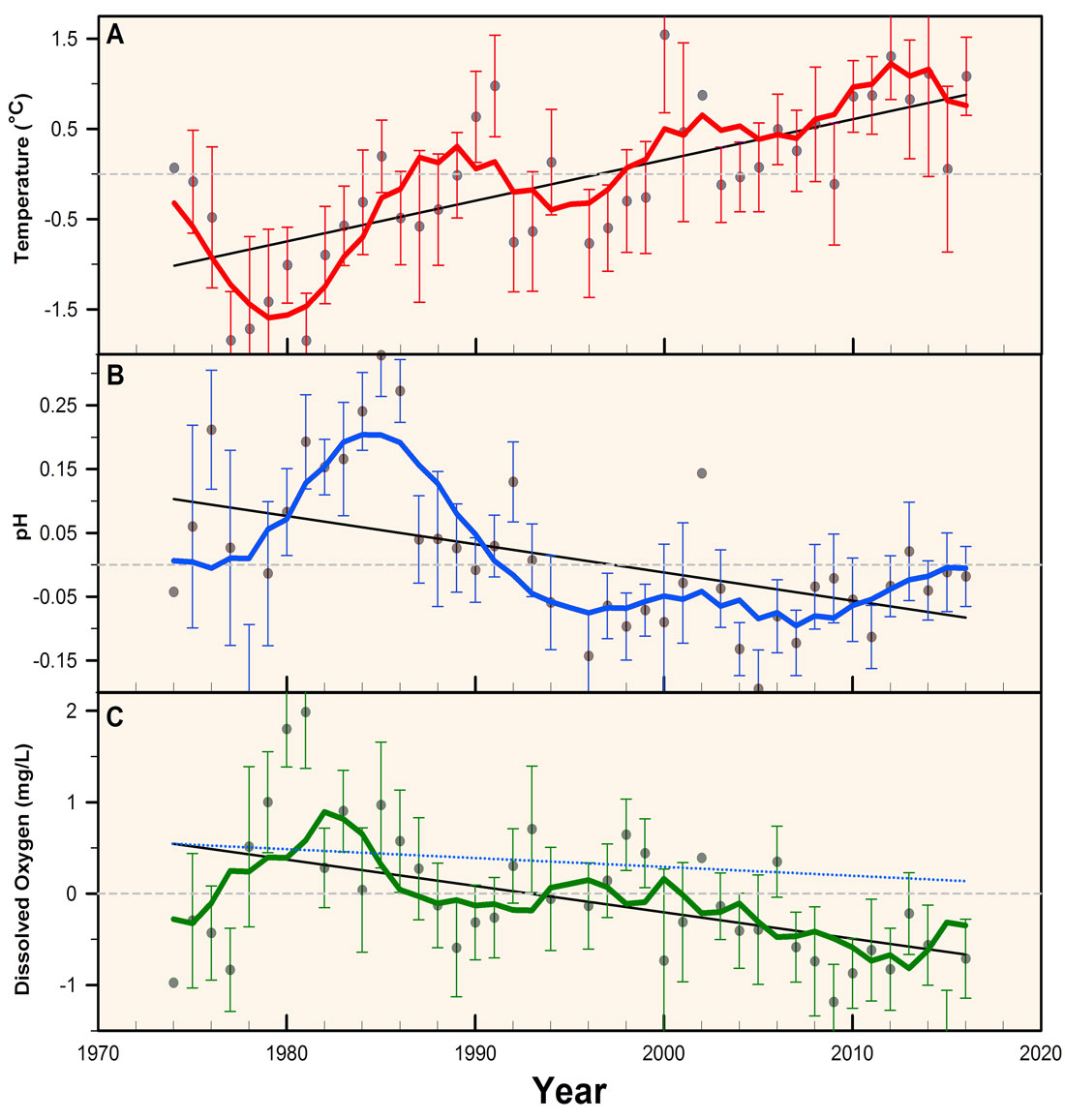Have a listen, how Hannes describes both the findings and the significance of the Project Oceanology time series.
Project Oceanology
[Publication] The Project Oceanology time-series has been published!

21 March 2019. We are happy to announce that Marine Environmental Research just published our most recent paper about long-term ecological change in eastern Long Island Sound based on data collected by Project Oceanology!For his Master’s thesis, Jacob Snyder painstakingly retrieved and digitized more than 40 years of environmental observations from Project Oceanology. This non-profit ocean literacy organization has educated middle and high school students on boat trips to nearby estuarine sites for decades. For the first time, his work allowed a quantitative evaluation of these data and glimpses into the abiotic and biotic changes in nearshore waters of Eastern Long Island Sound.
Highlights
- Citizen-science observations revealed rapid warming, acidification, and dissolved oxygen loss over the past 40 years in eastern Long Island Sound
- Otter trawl catches showed significant decreases in overall species diversity and richness
- Cold-water adapted species (American lobster, winter flounder) decreased, but warm-water adapted species (spider crabs) increased since 1997
Citation
- Snyder, J.T., Whitney, M.M., Dam, H.G., Jacobs, M.W., and Baumann, H. (2019). Citizen science observations reveal rapid, multi-decadal ecosystem changes in eastern Long Island Sound. Marine Environmental Research 146: 80-88
Public outreach
- The publication of this work is also featured in an article for the online magazine TheConversation.com titled
“Citizen science shows that climate change is rapidly reshaping Long Island Sound“
News coverage: UConn Today | New Haven Register | The Hour | NonProfit Quarterly | WSHU Public Radio
[Lab news] Baumann lab attends the CERF conference in Providence, RI

Together with Steve Litvin (Monterey Bay Aquarium) Hannes convened a theme session titled “Physiological ecology in the Anthropocene: linking the laboratory and field” and talked about our recently published paper on pH and oxygen fluctuations in nearshore coastal environments. Jake presented his Master thesis research on the newly digitized long-term time series of Project Oceanology, and Julie talked about the first aspect of her ongoing research on silverside otoliths and inferred patterns of growth and temperature-dependent sex determination. Well done, all!
- Baumann H. and Smith, E.M. 2017. Quantifying the covariance of pH and oxygen conditions across the diversity of US nearshore habitats.
- Pringle, J.W. and Baumann H. 2017. Sex-specific growth and mortality patterns in juvenile Atlantic silversides (Menidia menidia) from Connecticut waters.
- DeMayo, J.A., Park, G., Norton, L., Huffman, W., Finiguerra, M., Baumann H., and Dam, H.G. 2017. Combined effects of warming and acidification on life-history traits of the calanoid copepod Acartia tonsa.
- Snyder, J.T. and Baumann H. 2017. A newly digitized 45-year dataset of environmental and biological observations from Long Island Sound.



